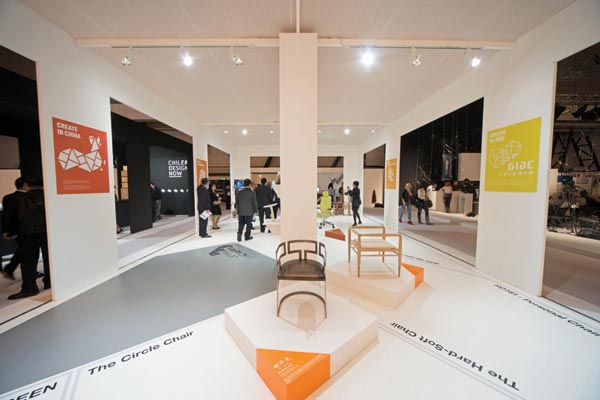Designing a creative future
Updated: 2012-09-24 09:10
By Cecily Liu and Zhang Chunyan in London (China Daily)
|
|||||||||||
 |
|
Chinese designers' works are showcased at Guangdong Industrial Design City's pavilion at London's 100% Design in Earls Court Exhibition Centre. Provided to China Daily |
A new wave of innovative Chinese design and creative cultural industry development has taken shape in the international spotlight.
Showcasing at the London Design Festival's commercial cornerstone event 100% Design at the Earls Court Exhibition Centre are the works of about 40 Chinese designers, ranging from simple furniture to clean-tech appliances.
"Chinese designers can create great products by combining Western concepts with Chinese tradition," says Li Yuanwei, design director of the Shenzhen-based Newplan Design.
"Elements of Chinese tradition are not necessarily observable in their works but influence their ways of thinking."
Li brought to the festival his "Butterfly Lamp", which is an LED lamp with two rectangular lighting panels shaped like butterfly wings. The light can be turned on and off remotely, using sensors.
"LED lights are already widely accepted in the West, but I've taken the concept to China and given it a twist, which makes the end product attractive for younger and more fashionable customers," Li explains.
Another exhibitor is Shenzhen CIGA Design chairman Zhang Jianmin, who brought to the festival his "solar candle" - a cube-shaped plastic candle powered by a solar panel.
"These candles are not just technologically innovative, as they are literally zero-carbon products, but also they make our customers' lives easier in practical ways," he explains. "For example, children can play with them without any fire risk."
These Chinese exhibitors' works appeared in two large pavilions. The first is hosted by Guangdong Industrial Design City (GIDC), a design hub that accommodates about 600 designers. The second is the Shenzhen Industrial Design Profession Association, which has 500 member companies.
Both companies hope to use the exhibition to attract international design enterprises to commercially or technologically cooperate with their Chinese member designers.
"We are keen to invite foreign designers to come to our hub and communicate with our designers because communication will spark new ideas," GIDC deputy director Hayward Cai says.
"Western designs have more mature technology and concepts, which is something we need to learn."
The two pavilions have won great acclaim from 100% Design's show director William Knight.
"Chinese design is very special," Knight says.
"It's interesting to see how it evolved through time in response to such a large consumer market."
Besides the pavilions and shows, Wuxi, a wealthy city from China's Jiangsu province, also staged the Creative Wuxi event in London last week. Creative Wuxi was intended to make introductions, seek business opportunities and expound on the city's creative and cultural industries, organizers say.
A display of 31 pieces of Wuxi porcelain highlighted local beauty and innovation.
The city accounts for 36 percent of China's emerging cultural and creative industries and is beginning to attract overseas attention. It's active in film, television, creative design, digital publishing, cultural tourism, advertising, online animation, performing arts and cultural heritage development.
Despite the strides of China's design sector and creative industry, Knight points out the challenge of turning great designs into viable commercial products.
"There is a great desire in China to create more products for the market, but one needs to think about if an additional product is really a new design or just the same design with a different element or color," he says.
He believes globalization is the way forward for China's design industry.
"A classic example is Italian suits," he says. "Everyone in the world wants to own an Italian suit. So, when everyone in the world wants to own a Chinese thing, Chinese design would have succeeded."
Contact the writers through zhangchunyan@chinadaily.com.cn.
Related Stories
Mission impossible at the Bird's Nest 2012-09-07 09:39
Cowboys, knits, a touch of goth 2012-09-03 13:32
Antique accessories for urban nomads 2012-08-28 14:52
Beckham promotes Fashion's Night Out 2012-08-27 13:43
Look good, feel better 2012-08-20 13:59
Today's Top News
Rescuers race against time for quake victims
Telecom workers restore links
Coal mine blast kills 18 in Jilin
Intl scholarship puts China on the map
More bird flu patients discharged
Gold loses sheen, but still a safe bet
US 'turns blind eye to human rights'
Telecom workers restore links
Hot Topics
Lunar probe , China growth forecasts, Emission rules get tougher, China seen through 'colored lens', International board,
Editor's Picks

|

|

|

|

|

|





